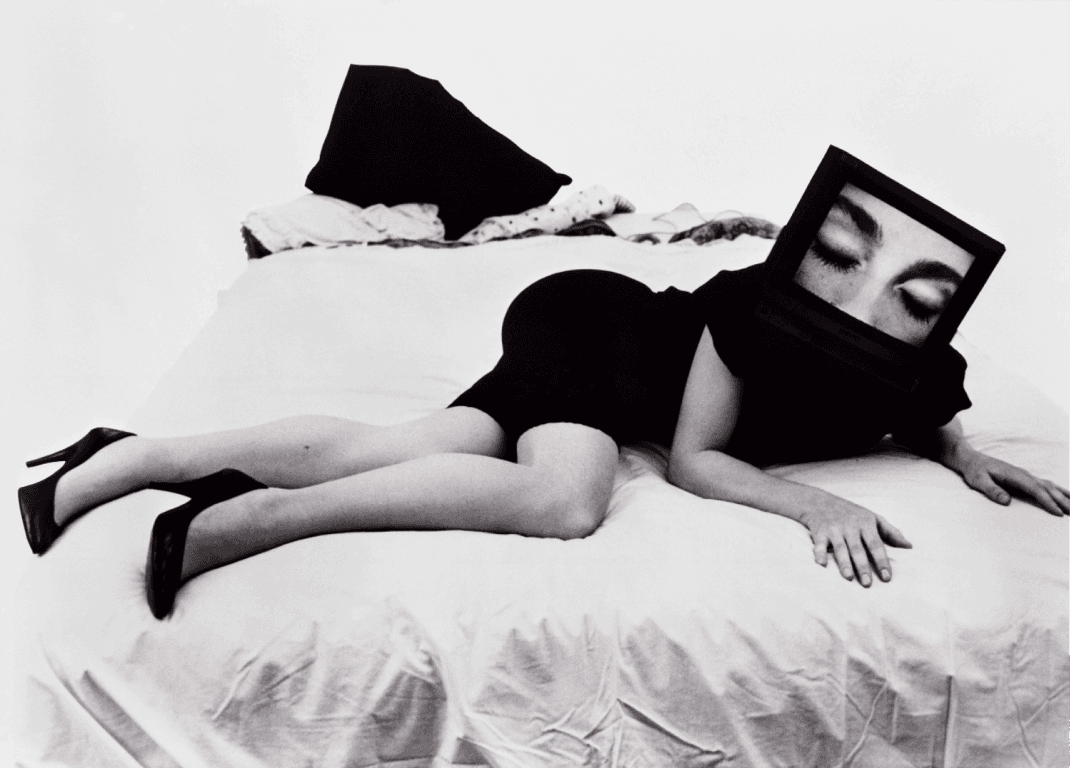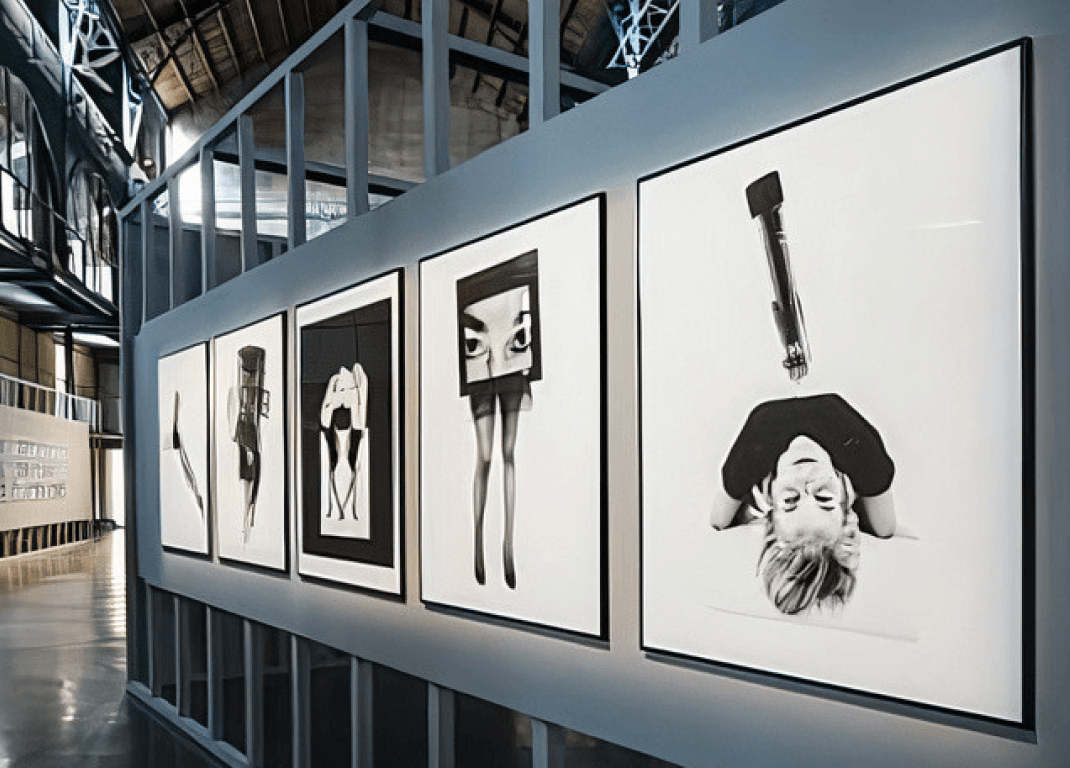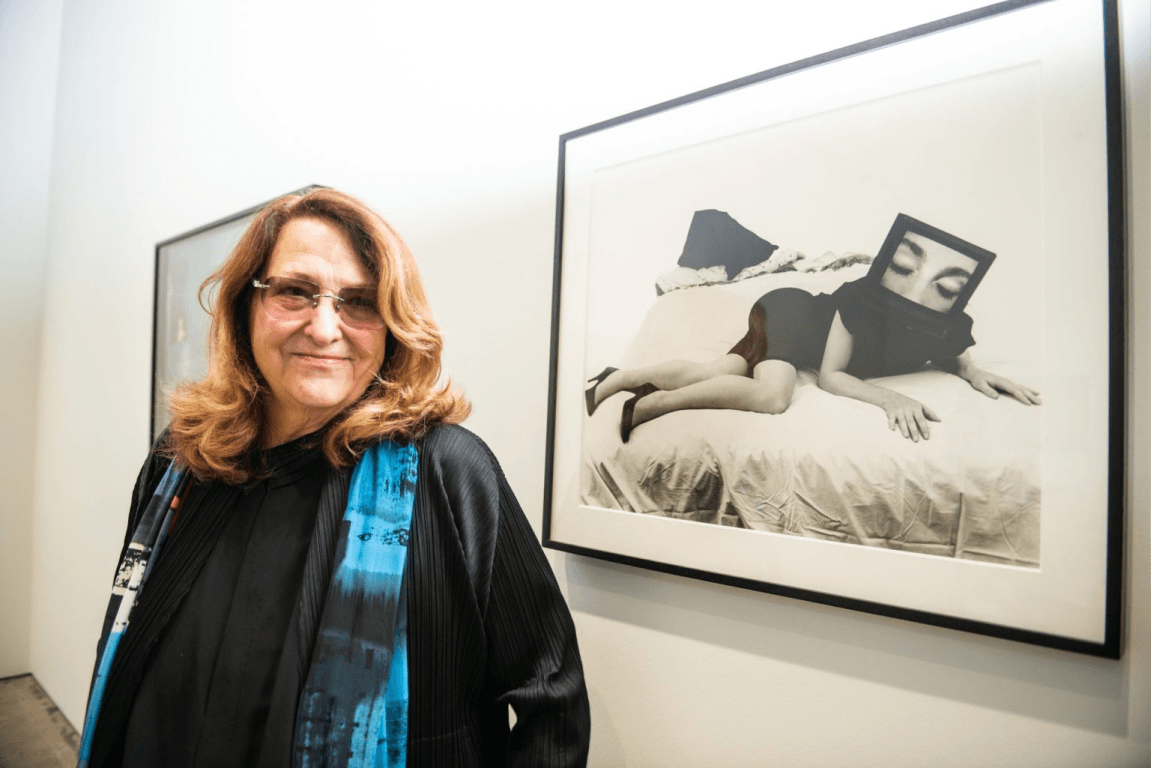AQ.0002
Lynn Hershman Leeson:
Seduction (1985)
Vintage print
•
Acquired Jun 2022
Fabrications of Feminine Allure
This photograph is part of a larger series called the "Phantom Limb" series, made before the advent of Photoshop, where Leeson collaged objects such as cameras, binoculars, electric plugs, clocks and televisions to replace the limbs of women cut out from magazine ads and photographs. From her earliest works, often located in domestic settings, she has been interested in the gendered way that technological advances present themselves in popular media: as ventures to be conquered, but also as alien or other femme fatales. It remain an iconic image from Leeson’s long career.
Featuring a woman seductively lying on a bed with a television screen replacing her head, Seduction is at once both alluring and unnerving. “The implicit strategy of these robotic female cyborgs is that they are posed and poised to outwit their captors,” Leeson writes in “The Terror of Immortality,” a 2014 text about the Phantom Limb series. “They are complicit in the action and understand fully what is being done to them, and therefore they seek to avenge themselves by reversing, revising, and transforming the very dynamic of absorption and consumption, seduction and defiance.” Is she captured, or is the image capturing us? The image is a stark distillation of the central motif of Leeson’s career, of the terror and the brilliance of the technology we co-habitate with.
Details
Meet Lynn Hershman Leeson

Lynn Hershman Leeson is a San Francisco based multimedia artist and filmmaker. Over the last five decades she has assembled a diverse and critically acclaimed body of work, earning a reputation as one of the most influential practicing media artists and a key force in legitimizing digital art forms.
Her work explores the relationship between humans and technology, identity, surveillance, gender roles and the use of media as a tool of empowerment against both censorship and political repression. The ways in which technology augments and reflects the human condition are mirrored in the array of mediums she has employed, which have included photography, film, performance, artificial intelligence, bio-art, installations, and interactive and internet-native art.
Looking back over Leeson’s remarkable career, one can’t help but be stunned by the prescience with which she has anticipated and echoed the complexities of a culture that has increasingly been defined by, and obsessed with, technology.
Artist
My Body, My Machine
Focused on the relationship between technology and the self for over five decades across her mischievous and visionary artwork, Leeson’s work was once called “an advance warning system” for identifying the dangers of technological advances by New York Times art critic Holland Cotter.
From painting to film, DNA to antibodies, surveillance to performance, her early work anticipated the most pressing societal questions of our moment. Even today, Leeson’s work continues to reflect on the most exciting and troubling technological innovations of our time.
Arkive launched an acquisition round titled “My Body, My Machine” on June 14, 2022, engaging in dialogue, discussion, and debate to choose which work to acquire. Seduction was considered alongside Carbon Footprint and Evidence of a Faulty Algorithm, three cornerstone works commenting on the uncanny experience of filtering our lives through a succession of screens.
After a series of votes, the community selected Seduction as the second acquisition into the collection. Core team members then worked with SF-based Altman Siegel gallery to acquire the work. Seduction will go on display globally via an Arkive traveling exhibition in late 2022. Following that, the work will enter into long term residency at a prominent public location, as selected by the Arkive membership.


